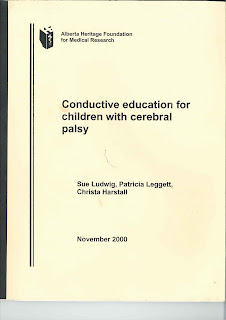At long last I can announce that the Virtual Library of Conductive Education now has a new format - and a new home, thanks to Ben Foulger.
Ben has spent a lot of his own time in the past few months creating a searchable database for the Virtual Library and in the process been very patient with my requests for all sorts of features, changes, yet more changes and further additions - he has managed them all. Wonderful.
Ben, I salute you!
The catalogue can now be found on the website of Conduction, the new UK charity for Conductive Education at http://www.e-conduction.org/virtuallibrary
The contents of the Library currently at http://www.virtualcelibrary.blogspot.com/ will gradually be included along with new items and the same criterium applies for those, that is availablility on the Internet. Some are free to acess and some require a subscription, password or payment for an individual article. So far items included are written e.g. articles, conference papers, documents, presentations. Films and videos may be added later.
The blog will remain and not be deleted until this process is completed.
Some people may be unused to searching a catalogue online, so there is a link to a help page containing some basic instructions and guidance.
This catalogue, like all 'live' library catalogues, will never be 'finished' as more new material becomes available and is recorded. I welcome any help you can offer in finding such material.
You will see that there is also a link to a Depository on the same page. It is hoped to put complete documents, unpublished papers, articles etc not available elsewhere into this starting very soon. At present it is empty.





